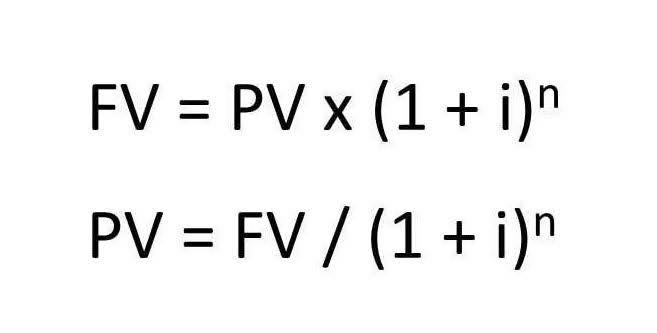
Depreciation involves the systematic allocation of the cost of physical assets, such as drilling rigs and production facilities, over their useful lives. Both processes ensure that the costs of these assets are matched with the revenues they generate, providing a more accurate picture of a company’s financial performance. The choice of depreciation and amortization methods, such as straight-line or declining balance, can significantly influence financial statements and tax liabilities. One of the primary challenges in adhering to these standards is the frequent updates and changes that occur. For instance, the introduction of IFRS 16, which deals with lease accounting, has had a significant impact on how oil and gas companies report their lease obligations. Companies must stay abreast of these changes and adjust their accounting practices accordingly.
Accounting for Depletion, Depreciation, and Amortization (DD&A)

Factors such as the type of crude oil, its sulfur content, and the presence of natural gas liquids can significantly influence the economic value. Additionally, external factors like oil prices, technological advancements, and regulatory changes play a pivotal role in reserve valuation. Financial models often incorporate scenarios to account for these variables, providing a range of potential outcomes. Production Sharing Contracts (PSCs) are a prevalent arrangement in the oil and gas industry, particularly in regions where governments seek to retain ownership of natural resources while leveraging the expertise and capital of private companies. Under a PSC, the state grants an oil company the right to explore and produce hydrocarbons in a specific area, with the understanding that the company will recover its costs and share the remaining production with the state. Explore essential principles and practices in oil and gas accounting, from revenue recognition to asset impairment and taxation.
Welcome to Gioffre & Company, LLP
- CFO is basically net income with non-cash charges like DD&A added back, so, despite a relatively lower charge for DD&A, CFO for an SE company will reflect the net income impact from expenses relating to unsuccessful exploration efforts.
- Under the successful efforts methodology, you expense them, and under the full cost methodology you capitalize them and add that CapEx to the PP&E on your balance sheet.
- Another important aspect is the treatment of variable consideration, which is common in oil and gas contracts.
- You see such high percentages because of the sky-high depreciation, depletion & amortization (DD&A) numbers for oil & gas companies and because many companies record them differently for book and tax purposes.
- Proponents of the successful method suggest that oil companies should only be allowed to capitalize the cost of exploration for wells that are producing oil.
- However, this is wishful thinking since the prospects are deepened by the thorough analysis and commencement of the drilling process.
The accuracy of these classifications directly impacts a company’s asset valuation and, consequently, its market valuation. A significant aspect of revenue recognition in this sector is the point at which control of the product is transferred to the customer. This can vary depending on whether the sale is made at the wellhead, at a processing facility, or at the point of delivery. For instance, oil and gas accounting in a wellhead sale, revenue is typically recognized when the oil or gas is extracted and sold directly at the site. Conversely, if the sale occurs at a processing facility, revenue is recognized once the product has been processed and delivered to the buyer. Exact accounting data is critical for evaluating project economics, making informed investment decisions, and planning for the future.
Financial Reporting and Transparency
- On the other hand, the proportionate consolidation method involves recognizing the investor’s share of the joint venture’s assets, liabilities, revenues, and expenses directly in its financial statements.
- California had more than 540,000 clean energy jobs by the end of 2023 – accounting for more than half of all energy jobs in the state, according to E2’s analysis of the U.S.
- The government of Pakistan has been reported to by the relevant departments about the resources found in territorial waters; however, the exact quantities of reserves, proposals for exploitation, and commercial viability are still being examined.
- A cross-reference of donations with voting records indicates that oil money alone doesn’t necessarily translate to votes.
- We offer a host of helpful back-office administrative services designed to help you drive your business forward.
- For E&P companies, there’s an alternate intrinsic valuation methodology called the Net Asset Value (NAV) model that often gives more accurate results.
- Reserve estimation and valuation are fundamental to the oil and gas industry, serving as the bedrock for investment decisions, financial reporting, and strategic planning.
Revenue recognition in the oil and gas industry is a complex process influenced by various factors, including the nature of contracts, the timing of delivery, and market conditions. The industry often deals with long-term contracts, which can span several years and involve multiple performance obligations. These contracts require careful analysis to determine when and how revenue should be recognized. The Financial Accounting Standards Board (FASB) and the International Financial Reporting Standards (IFRS) provide guidelines to ensure consistency and transparency in revenue reporting. Oil and gas accounting is a specialized field that requires a deep understanding of both the industry and its unique financial practices. Given the sector’s complexity, accurate accounting is crucial for compliance, investment decisions, and operational efficiency.

It is important to note oil still in the ground is not considered an asset until it is extracted and produced. Once the oil is produced, oil companies generally list what isn’t sold as products and merchandise inventory. When it comes to oil and gas companies, everything revolves around how they treat capitalized costs. The accounting for AROs begins with the initial recognition of the obligation at the time the asset is installed or when the obligation is incurred. This involves estimating the future costs of dismantling and restoration, which are then discounted to their present value. The present value of these future costs is recorded as a liability on the balance sheet, with a corresponding increase in the carrying amount of the related asset.
- Tools like SAP S/4HANA and Oracle Financials Cloud are commonly used to navigate these complexities, providing real-time updates and analytics to support accurate financial reporting.
- « Guess who pays the highest rates of gas? » Rubio said, referring to the price of gas in California.
- This section dives into the changes in the key accounting issues due to the new revenue recognition standard.
- The oil and gas industry donated nearly three times more to Republicans than congressional Democrats in D.C., who, in contrast to Republicans, rarely voted against environmental legislation (1%).
- Her voting record shows that, like most Democrats, she votes against oil industry interests most of the time.
Accounting methods and principles should be applied consistently from one period to another. The oil and gas exploration process alone requires a heavy investment of approximately 5 billion dollars and it could take four to five years to extract reserves. In case of successful exploration, further investments would be required to extract deposits and produce fuel through a well digging and infrastructure development.

Types of Costs in Oil and Gas Operations
Companies list their proved reserves in the supplemental section of their financial statements. Proved reserves are typically broken down into two categories called developed and undeveloped. Under the Full Cost method (FC), most exploration and development costs are capitalized by an aggregated “cost pool” regardless of the outcome. Typically, you will have one single depletion calculation on each pool, and you base the asset impairment tests on a ceiling test. At EAG Inc., we think of “best practices” as the set of techniques and procedures that allow you to produce the most efficient results with the least number of resources. For accounting in the oil and gas industry, best practices are ever-evolving due to technological advancements, macroeconomic conditions, and the continual need to reduce general and administrative (G&A) costs.
Implications of the new revenue model

One of the unique aspects of PSCs is the concept of “cost recovery.” The contractor is allowed to recoup its exploration and development expenditures from a portion of the produced oil or gas. This mechanism ensures that the contractor can recover its investment before sharing profits with the state. However, there are often limits on the amount of production that can be allocated to cost recovery in any given period, which can impact the contractor’s cash flow and financial planning. Accounting in the oil and gas industry is a specialized field that requires a deep understanding of both financial principles and sector-specific practices. The complexity arises from the unique nature of exploration, extraction, and production activities, which involve significant capital investment and long-term project timelines.

Below is the annual summary of oil reserves for Exxon Mobil Corporation (XOM) for 2018 as reported in the company’s 10K report. We believe the oil and gas industry is at the beginning of the back-office technological revolution. Over the next decade, companies will see a fundamental transformation of how they can eliminate waste, streamline accounting, and automate daily tasks, as well as reduce overall G&A. The more you can think outside the box to challenge the status quo, the more efficiencies you’ll gain in the long term.

